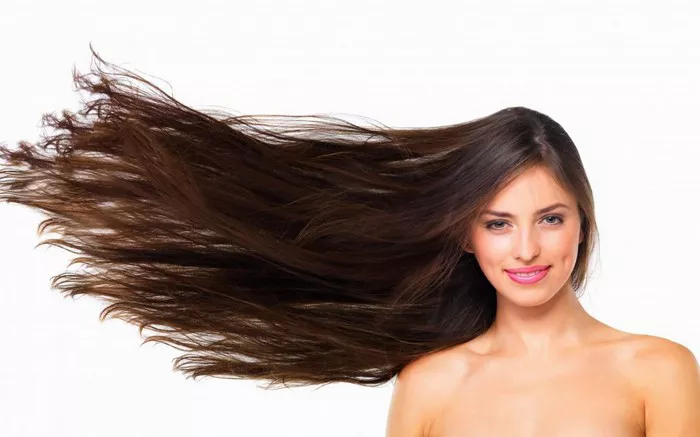Bleaching your hair can be a transformative experience, offering a new look and style. However, it often comes with the unfortunate side effect of damage. Bleach strips away the natural pigment in your hair, leaving it vulnerable to dryness, breakage, and brittleness. Fortunately, there are steps you can take to repair and restore your bleached and damaged locks to their former glory. In this comprehensive guide, we’ll explore the best techniques and products for revitalizing your hair and maintaining its health and strength.
Understanding the Damage:
Before diving into solutions, it’s crucial to understand the nature of the damage caused by bleaching. Bleach works by penetrating the hair shaft and breaking down the melanin, which gives hair its color. This process also compromises the structural integrity of the hair, leading to issues such as:
1. Dryness: Bleach strips away the natural oils in the hair, leaving it dry and prone to frizz.
2. Breakage: Weakened hair shafts are more susceptible to breakage, resulting in split ends and shorter strands.
3. Brittleness: Bleached hair often becomes brittle and prone to snapping, especially when subjected to heat styling or harsh treatments.
4. Porosity: Bleached hair has higher porosity, meaning it absorbs and loses moisture more quickly, leading to further damage if not properly managed.
The Road to Recovery:
Repairing bleached and damaged hair requires a multifaceted approach that addresses both internal and external factors. Here’s a step-by-step guide to rejuvenating your locks:
1. Assess the Damage: Start by assessing the extent of the damage to your hair. Look for signs of dryness, breakage, and brittleness. This will help you tailor your treatment plan to meet your specific needs.
2. Trim Regularly: Schedule regular trims to remove split ends and prevent further breakage. While it may seem counterintuitive to cut your hair when trying to grow it out, removing damaged ends will promote healthier growth in the long run.
3. Deep Conditioning: Invest in a high-quality deep conditioning treatment or mask specifically formulated for damaged hair. These products are designed to penetrate the hair shaft, replenishing moisture and restoring elasticity. Use them weekly or as needed, focusing on the mid-lengths and ends of your hair.
4. Use a Protein Treatment: Protein treatments can help strengthen and fortify the hair shaft, reducing breakage and improving overall resilience. Look for products containing ingredients like keratin, collagen, or silk protein. Use them sparingly, as excessive protein can lead to stiffness and brittleness.
5. Avoid Heat Styling: Minimize heat styling as much as possible, as high temperatures can further damage already weakened hair. If you must use heat tools, always apply a heat protectant spray beforehand and use the lowest heat setting necessary to achieve your desired style.
6. Protect from UV Rays: Just like your skin, your hair can suffer from sun damage. Wear a hat or use a UV-protectant spray when spending prolonged periods in the sun to shield your hair from harmful UV rays.
7. Switch to Gentle Hair Care Products: Opt for sulfate-free shampoos and conditioners, as sulfates can strip away natural oils and exacerbate dryness. Look for products labeled as hydrating or moisturizing, and avoid those containing harsh ingredients like alcohol or parabens.
8. Limit Chemical Treatments: Minimize the use of additional chemical treatments, such as hair dye or perms, while you focus on repairing your hair. These treatments can further weaken already damaged hair and hinder the recovery process.
9. Eat a Balanced Diet: Your hair’s health is closely tied to your overall nutritional intake. Ensure you’re consuming a balanced diet rich in vitamins, minerals, and protein to support healthy hair growth and repair.
10. Be Patient: Repairing damaged hair takes time and patience. Consistency is key, so stick to your treatment plan and be gentle with your hair as it gradually regains strength and vitality.
Recommended Products:
When it comes to repairing bleached and damaged hair, choosing the right products can make all the difference. Here are some top recommendations:
1. Olaplex No. 3 Hair Perfector: This cult-favorite treatment is designed to repair and strengthen damaged hair, restoring elasticity and shine.
2. Moroccanoil Intense Hydrating Mask: Infused with argan oil and antioxidants, this deep conditioning mask nourishes and revitalizes dry, damaged hair.
3. Aphogee Two-Step Protein Treatment: This intensive protein treatment helps rebuild the hair’s structure, reducing breakage and improving elasticity.
4. SheaMoisture Jamaican Black Castor Oil Strengthen & Restore Shampoo and Conditioner: Formulated with nourishing ingredients like Jamaican black castor oil and shea butter, this shampoo and conditioner combo helps hydrate and strengthen damaged hair.
5. Briogeo Don’t Despair, Repair! Deep Conditioning Mask: Packed with nourishing ingredients like avocado, argan oil, and keratin, this deep conditioning mask restores moisture and vitality to dry, damaged hair.
Conclusion:
Repairing bleached and damaged hair requires patience, dedication, and the right approach. By following these expert tips and recommendations, you can effectively revive your locks and restore them to their former health and beauty. Remember to be gentle with your hair, avoid further damage, and give it the love and care it deserves. With time and consistent care, you’ll soon be flaunting a head of healthy, vibrant hair once again.


